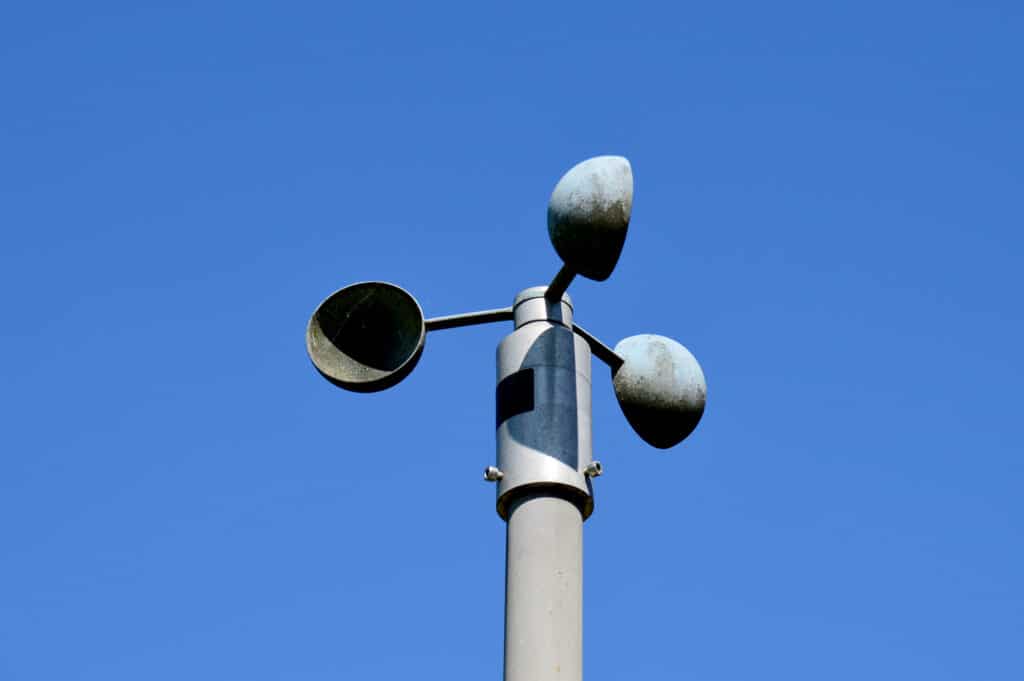The Role of an Anemometer in Improving Security for Outdoor Activities
The Role of an Anemometer in Improving Security for Outdoor Activities
Blog Article
Discovering the Features and Benefits of Anemometers for Climate Fanatics and Experts
Anemometers stand as instrumental tools in the world of climate monitoring, accommodating both lovers and skilled specialists alike. These gadgets use a window into the dynamic world of wind patterns and speeds, supplying indispensable data for meteorological analysis and projecting. From cup anemometers to sonic anemometers, each type brings its unique set of applications and benefits, clarifying different facets of weather. As we look into the functions and advantages of anemometers, a much deeper understanding emerges not only of dominating climate phenomena but likewise of the more comprehensive effects for fields like wind energy production and ecological research.
Value of Anemometers in Climate Tracking
Anemometers play a crucial function in climate surveillance by giving accurate measurements of wind speed, assisting in forecasting and understanding weather patterns. These instruments, ranging from traditional cup anemometers to contemporary ultrasonic anemometers, are vital for meteorologists, researchers, and weather lovers alike. By gauging wind speed, anemometers aid in determining the strength of weather phenomena such as cyclones, storms, and tornadoes. Furthermore, they supply useful data for aeronautics, maritime procedures, and numerous sectors that are sensitive to wind problems.

Sorts Of Anemometers and Their Applications
The most common types of anemometers consist of cup anemometers, vane anemometers, hot-wire anemometers, and ultrasonic anemometers. Cup anemometers consist of three or four mugs placed on horizontal arms that turn with the wind, gauging its rate. Vane anemometers, on the various other hand, make use of a freely turning vane to align with the wind direction, providing both wind rate and instructions dimensions.
Cup anemometers are appropriate and robust for general weather monitoring, while vane anemometers are preferred for directional dimensions. Ultrasonic anemometers are non-intrusive and provide high precision, commonly made use of in research and specialized weather condition monitoring applications.
Advantages of Using Anemometers in Projecting
In meteorology, the use of anemometers uses invaluable benefits for enhancing the accuracy of weather forecasting. Anemometers determine wind speed and direction, offering important information for predicting weather condition patterns. By integrating wind data into projecting versions, meteorologists can much better recognize the motion of climate systems, anticipate adjustments in weather, and concern extra specific projections.
Additionally, anemometers play a vital function in assessing possible weather risks. Keeping track of wind rates helps forecasters anticipate serious climate events such as cyclones, twisters, and winter months storms with better precision. This very early caution system enables authorities to issue timely informs and execute required security actions, decreasing the risks to life and building.
Additionally, anemometers help in maximizing renewable resource production. By assessing wind patterns, meteorologists can determine appropriate areas for wind farms and predict power result, adding to the efficient generation of wind power.

Anemometers in Wind Energy Manufacturing
Offered the essential role anemometers play in offering accurate wind data for climate projecting and hazard analysis, their relevance reaches the realm of wind energy manufacturing. Anemometers are necessary instruments in the area of wind energy, where the measurement of wind speed and instructions is essential for establishing the expediency and effectiveness of wind generator installations. By accurately gauging wind rates at differing heights, anemometers assist enhance the positioning and design of wind generators to make the most of energy output.
In wind farms, anemometers are strategically positioned to gather real-time wind information that is used to evaluate the possible energy manufacturing of a website. This information is crucial in figuring out the financial viability of wind power tasks and in projecting energy generation to guarantee grid security. In addition, anemometers help in keeping track of wind problems to optimize generator efficiency, protect against damages from high winds, and ensure the safety of workers functioning in the location of wind turbines.
Enhancing Climate Recognizing With Anemometers

Anemometers play a vital duty in boosting our understanding of microclimates. These localized weather can vary dramatically from wider local projections, making it important to have precise data for details locations. anemometer. By strategically putting anemometers in various locations, researchers can collect detailed information on just how wind behaves in different surfaces, urban environments, or bodies of water
In addition, anemometers add to boosting climate projecting versions by providing real-time information on wind behavior. This information is especially important for forecasting severe climate occasions, enhancing agricultural techniques, and the original source sustaining sectors like aeronautics and maritime navigation. Generally, anemometers are very useful tools that allow us to dive much deeper into the intricacies of climate systems, eventually leading to more better-informed choices and exact predictions.
Verdict
In conclusion, anemometers play a vital role in weather surveillance and projecting by measuring wind rate and instructions. Anemometers additionally have applications in wind power manufacturing, further highlighting their importance in both weather forecasting and sustainable power sectors.
From cup anemometers to sonic anemometers, each kind brings its special set of applications and advantages, dropping light on my site various elements of climatic conditions. These instruments, varying from conventional cup anemometers to modern ultrasonic anemometers, are necessary for meteorologists, scientists, and climate enthusiasts alike. The most typical types of anemometers consist of official source mug anemometers, vane anemometers, hot-wire anemometers, and ultrasonic anemometers. Mug anemometers are durable and appropriate for general climate tracking, while vane anemometers are favored for directional dimensions. Anemometers are vital instruments in the area of wind energy, where the dimension of wind speed and direction is vital for identifying the usefulness and effectiveness of wind turbine setups.
Report this page